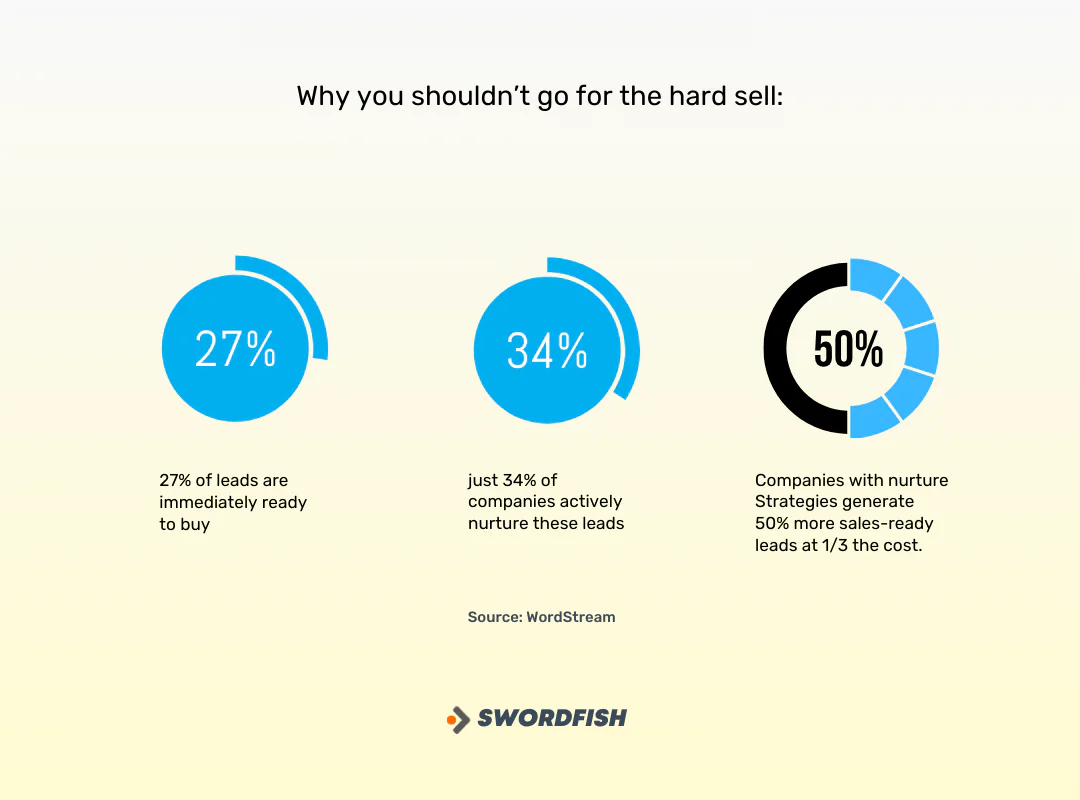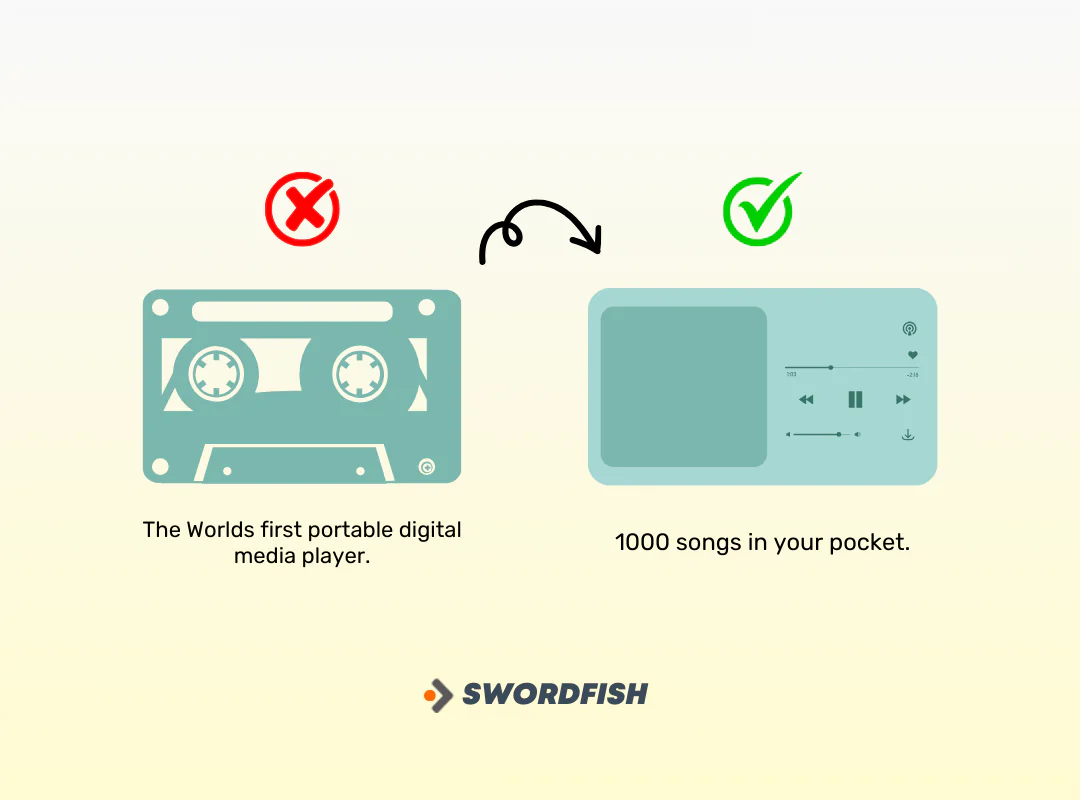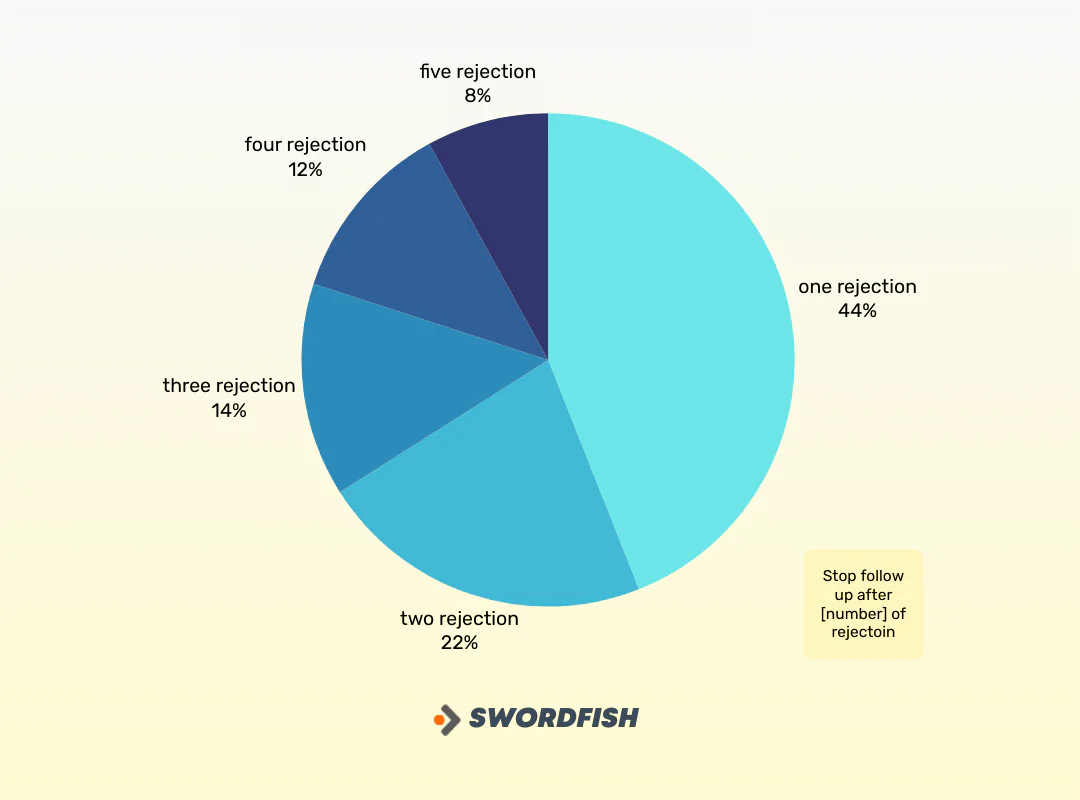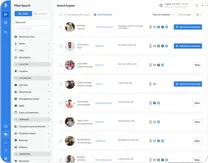
B2B sales, or business-to-business sales, involve transactions between businesses, and it’s a rapidly evolving field. According to a Forrester study, 59% of buyers now prefer to shop online rather than interact with sales representatives.
The change highlights how important it is for businesses today to have good B2B sales strategies. These strategies help businesses really understand and connect with their target market, build strong, lasting relationships, and increase sales.
In the following sections, we’ll look into the core elements of B2B sales strategies. We’ll show you how our proven strategies can help you keep up with business and client needs.
What is B2B Sales?
B2B sales, or business-to-business sales, is when companies sell products and services to other businesses, not directly to individual consumers like in B2C sales. These sales often involve larger orders, take more time to complete, and are usually more complex than consumer sales.

In recent years, B2B sales have changed significantly. The effective B2B sales strategies that were successful in the past may no longer work today. That’s why we need advanced strategies.
How the B2B Sales Process Works
The B2B sales process is a series of steps that include specific strategies and techniques tailored to different types of buyers and sales situations. Depending on the industry, company, and sales team, this process can have anywhere from five to eight stages.

Example of a 6-Stage B2B Sales Cycle —
1. Conducting Research
Start with the very basics. Understanding your market, competitors, and the specific needs of your potential buyers. It helps ensure your product or service meets market demands.
2. Finding Customers
It’s crucial to identify potential buyers who have the need, interest, and budget for your product or service. LinkedIn is often the best tool for B2B companies to locate and research these leads.
On LinkedIn, you can explore your leads’ recent activities and discover their challenges. Additionally, visiting the websites of potential clients can provide valuable information for your sales calls.
3. Reaching Out
Once you understand the market, competitors, and your target audience, the next step is to build relationships. This involves using both inbound and outbound marketing techniques.
However, before calling a potential customer, it’s crucial to know their specific needs and challenges.
4. Making the Pitch
After preparing thoroughly, it’s time to contact your prospects, either by phone or through a LinkedIn InMail. Here, you’ll explain how your products or services address their issues.
Remember to tailor your pitch to each buyer, offering a personalized approach that shows your expertise in the field.
5. Keeping in Touch
Don’t expect immediate success after your first pitch. Often, you’ll need to follow up. In B2B sales, follow-up includes checking if prospects need more information or scheduling another meeting a few days later.
6. Finalizing the Deal
Once a prospect is ready to use your services, the last step is getting them to sign the contract. This final part of the effective B2B sales strategies is often the simplest, marking the completion of your sales process.
Top 10 Best B2B Sales Strategies to Upscale Your Sales

Try implementing these strategies after going over them carefully since they can increase your sales a lot.
1. Know Your Ideal Customer
The first step to improve your sales is to identify who you’re selling to. Understand the specific needs and challenges of your target customers and offer solutions that address these issues.
Your marketing should engage B2B buyers at every step of their journey. It’s crucial to stand out from your competitors through thorough research. Focus on understanding your prospects’ motivations and challenges – this is known as psychographics, which goes beyond basic demographics.
Before you approach a potential customer, make sure you have a deep understanding of their unique needs and problems. This approach is part of the most effective B2B sales strategies, ensuring that your efforts are tailored and relevant.
2. Prioritize Listening Over Talking
Getting a busy buyer’s attention is tough, and it’s tempting to close the deal quickly. However, this approach often backfires, especially in B2B sales.
Remember, you’re likely not the only one pitching to them, and focusing solely on the sale can be off-putting.

Statistics show that only 27% of leads are immediately ready to buy, yet just 34% of companies actively nurture these leads. Instead of aggressively selling right away, focus on making the prospect feel valued and understood.
Here’s a better approach —
Ask Insightful Questions
Pose meaningful questions about their company that require thoughtful answers. These questions should —
- Align with their viewpoints.
- Demonstrate your thorough research on their company, employees, decision-makers, competitors, and industry.
- Helps you collect details to reference later, showing you’re attentive.
Active Listening
Really listen to their responses. This helps you pick up on subtle cues, essential for nurturing a relationship. Building personal connections not only helps you stand out from competitors but also fosters lasting client relationships.
Proper lead nurturing, in fact, may create 50% extra leads at only one-third of the expense.
Personalize Your Communication
This applies to emails too. Your initial email should show you’ve done your homework, perhaps mentioning recent company news or a personal achievement of the prospect.
Once you have their attention, introduce your product or service in a way that highlights its immediate and long-term benefits.
3. Focus on Current Customers
Before seeking new leads, consider the potential within your current customer base. Marketing Metrics a book says that selling to existing customers is 60% to 70% more likely than new ones, and they tend to spend 31% more on your products.

Research by Userlane revealed that 60% of new features in SaaS products go unused by customers. However, introducing these features to existing customers can significantly increase engagement and reduce churn.
You reduce acquisition costs, increase upselling opportunities, and strengthen relationships by focusing on your current customers. Sales intelligence tools and CRM systems can help identify customers who are ready to try new products.
However, relying solely on B2B sales strategies and tactics along with automation tools isn’t enough. Regularly connect with your long-term customers. Identify their needs, new features, and challenges, and see how you can help.
Their feedback can provide valuable insights into how your products are used and uncover new sales opportunities. This information is crucial for both retargeting existing customers and attracting new ones.
Remember, your work with current customers is already halfway done, so don’t overlook their potential.
4. Discover New Data Sources
As Google plans to eliminate third-party cookies this year, targeting accuracy will become more challenging. Marketers and sales teams need to find alternative data collection methods for the best B2B sales strategy in 2023. One approach is to use first-party data to build prospect lists.
For instance, Swordfish AI offers GDPR and CCPA compliant, secure data to enhance your B2B marketing efforts. Our lists include detailed contact information, such as mobile numbers, business emails, and social media profiles, enabling immediate action.
Other effective data targeting methods include —
- Updating existing third-party data for retargeting campaigns.
- In Google Ads, combining broad-match keywords with audience targeting.
- Using paid advertisements to promote gated content for lead generation.
- Researching demographics through LinkedIn.
- Exploring alternatives to Google, like Microsoft.
- Conducting your marketing experiments to gather psychographic data.
5. Use Content Marketing
Content marketing is about creating and sharing valuable content to attract and keep a specific audience. It’s especially important in B2B sales for educating potential customers, gaining their trust, and showing your company’s expertise.
According to CMI, content marketing is implemented by 73% of B2B companies.
It includes blog posts, case studies, white papers, videos, and webinars. The key is to make content that’s both interesting and useful to your audience. By sharing informative content, salespeople can build credibility and become recognized as experts in their industry.
6. Emphasize Benefits, Not Just Features
B2B buyers are more interested in the benefits of a product than its features. They focus on the value it adds and its potential return on investment (ROI) for their company, rather than how it works.
The shift from highlighting features to benefits can be challenging. It’s because product development often focuses on features while understanding benefits requires a broader perspective.
Due to their close involvement with the product, salespeople often overlook the buyer’s expertise and overemphasize features.

Consider how Steve Jobs presented the iPod. Despite creating a groundbreaking device, he and his team didn’t just list its features. They showed what people could do with it.
Today, the most effective ways to demonstrate benefits include customer testimonials, free product demos, and showing measurable results. Help customers envision their success with your product, rather than just talking about its technical aspects, and watch your sales grow.
7. The Value of Email Marketing
Email marketing is expected to generate nearly $11 billion in revenue by the end of 2023. That’s why 81% of marketers use it in their B2B content marketing strategies.
But email marketing isn’t just about sending cold emails and newsletters.
What other benefits does it offer? One effective strategy is to nurture campaigns. To run these well, you should use automation tools. These tools schedule your campaigns, ensuring the right people receive your emails at the right time.
Understanding B2B data can reveal key marketing opportunities specific to your industry, leading to significant success. This knowledge allows you to send highly personalized emails when they are most relevant to your prospective clients.
Consider setting up automated drip email campaigns. These can initiate conversations with potential clients and ensure timely follow-ups.
8. Utilize Dark Social
Dark social media, a term gaining popularity, is one of the best uncommon B2B sales strategies for 2023. It refers to when someone shares your content, like a blog post, through private channels such as WhatsApp or Facebook Messenger.
This sharing is ‘dark’ because it’s hard to track who and how often your website link is shared.
By June 2023, WhatsApp’s global user base has surpassed 2.78 billion unique individuals, a number that continues to grow. Furthermore, data from the second quarter of 2023 indicates that Facebook has reached 3.03 billion monthly active users.
Many brands are already using this approach to engage with potential customers on instant messaging platforms. This strategy is effective for developing personal connections with leads and converting them more quickly.
9. Embrace Diverse Communication Methods
McKinsey reports that B2B buyers use over 10 different channels to interact with suppliers. In today’s world, having an omnichannel marketing and sales approach is a basic expectation, not just an advantage. Buyers want to connect with you around the clock and are not satisfied with just phone or email communication.
To boost B2B sales, it’s crucial to engage through all available channels. This includes social media, text messages, email, phone calls, Zoom, Slack, and in-person meetings.

Using a variety of channels keeps your approach to reaching out fresh and less overwhelming. For example, after a sales call, you might follow up on LinkedIn using a topic the prospect was discussing to introduce your product. Or, in Slack, you could share a quick tutorial to address a specific concern.
10. Keep Following Up with Your Sales Leads
Many salespeople aim to build lasting relationships and nurture their leads, but often overlook a crucial step: following up. An Invesp study found that 44% of sales reps don’t follow up after their first attempt.

Besides, the B2B buying process is complex, and often, prospects don’t have the time to consider your offer immediately. Your role is to keep in touch and follow up regularly.
Regular follow-ups keep you at the forefront of your prospects’ minds. This way, even if they don’t need your product immediately, they might think of you when the time is right. Many sales reps give up too quickly.
Those who persist and continue to follow up are more likely to close the deal in the end.
What are Common B2B Sales Challenges?
Here are typical challenges in B2B sales and how to address them —
1. Lack of Content
It’s challenging to explain your products and connect with clients when you’re just starting. Often, businesses lag in brand visibility because they don’t have enough online marketing content or fail to reach their audience effectively.
Solution
Collaborate with your marketing team to create content that meets your prospects’ needs and highlights your product’s value. Use blogs and social media campaigns to position yourself as an industry leader.
2. Long Sales Cycles
B2B sales cycles are usually longer than B2C due to the involvement of multiple decision-makers and complex deals. Prospects might take months to move from initial interest to purchase.
Solution
Build trust and long-term relationships with your leads. Use marketing automation for follow-ups, especially with leads who are interested but not yet ready to buy. This can help speed up the sales process.
3. Data Overload
Managing too much data can be overwhelming and counterproductive. It can waste resources and turn off potential customers if they’re bombarded with information.
Solution
Focus on what benefits your product offers from the customer’s perspective. Tailor your communication to the buyer’s specific needs and provide only the most relevant data and analytics.
4. Low Customer Confidence
In B2B, the financial risks are higher, and switching products or services can be daunting. This often leads to hesitation among decision-makers.
Solution
Build trust by showing how your solutions have worked for similar businesses. Use case studies and testimonials to demonstrate your success and increase buyer confidence.
5. Not Keeping Up with Technology
Not staying updated with technological advancements can set you back in the fast-paced digital world.
Solution
Consider modern tools and technologies to improve your sales team’s efficiency. Implement CRM systems, cloud technology, data analytics, and sales automation tools to keep your sales operations up-to-date and effective.
Find Quality B2B Leads with Swordfish AI and Increase Sales!
It’s important to connect with the right people in business. And that’s what we do at Swordfish AI. We make B2B lead generation not just effective, but also personal and engaging.
Our unique cell phone number and specialized verification system are designed to make your cold calling efforts more fruitful and less of a hassle. We also offer 3.5 billion data profiles at Swordfish AI. It opens up endless possibilities for connecting with potential business partners, whether they’re a growing startup or an established corporation.
With our Bombora feature, you stay informed about the latest industry trends. You can then tailor your communication to what your audience finds most engaging and relevant.

Features of Swordfish AI
Swordfish AI shines as a dynamic tool crafted to transform B2B sales strategies through its comprehensive set of features. These features focus on improving how you generate leads and ensure the accuracy of contact information. Let’s dive into the key offerings —
-
Prospector

The Prospector tool from Swordfish AI lets you quickly create lists for calling and emailing potential leads. Thanks to its detailed filters and the ability to exclude certain data, you can trust the quality of your lead generation. It’s vital for sales teams eager to boost their pipeline effectively.
-
API Integration

Swordfish AI also offers API integration, enabling your business to add its unique data directly into your systems. It’s ideal for companies needing easy access to precise contact info, increasing efficiency and productivity in sales and recruitment efforts.
-
Reverse Search

The Reverse Search function allows you to use whatever information you have—like a name, company, or email—to find the contact details you’re missing. This method is great for filling any gaps in your contact lists.
-
File Upload

Updating your CRM is easier with the File Upload feature. Put in a CSV file, and Swordfish AI will add any missing phone numbers and emails for you. This saves time for teams wanting to keep their CRM data complete and current with little hassle.
-
Chrome Extension

Swordfish AI’s Chrome Extension is a breakthrough for those in sales and recruitment. It helps you find anyone’s contact details online, using reliable data from various platforms such as LinkedIn, Twitter, and Facebook.
-
Bombora Intent

By integrating Bombora Intent Data, Swordfish AI equips you with the insight to spot companies actively looking for what you offer. This tool uses intent data to help you focus on prospects more likely to make a purchase, greatly improving your sales strategy’s success.
Conclusion
To sum up, we explored various B2B sales strategies that can enhance sales outcomes. We emphasized the importance of listening more than speaking, personalizing your communication, and maintaining strong relationships with existing customers.
Remember, effective B2B sales go beyond just strategies. It’s about aligning your offerings with your customers’ wants and needs. Use these insights to develop a sales plan that truly resonates with your customers as you move forward.
In terms of B2B lead generation, Swordfish AI offers unique features that make it an ideal choice for companies seeking to expand. Try Swordfish AI today to connect and more sales.
Frequently Asked Questions
What are the four types of B2B selling?
In B2B selling, there are four main types: producers, resellers, governments, and institutions. Each category represents a different kind of client in the business-to-business market.
What’s the most important rule in B2B sales?
The most important rule in B2B sales is to prioritize the customer’s needs over short-term sales goals. This approach focuses on building long-term relationships rather than just earning commissions and bonuses.
How does B2B sales function on LinkedIn?
LinkedIn is an ideal platform for B2B sales teams for lead generation. It provides a professional backdrop for your business and offers targeted marketing, efficient use of data, and sponsored content. These features help ensure that your company effectively reaches and engages your desired audience.


 View Products
View Products



